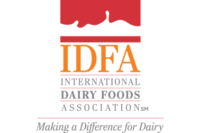
A Farm Bill That Milks Dairy
by Stephen Barlas
The first thing to note about the Bush administration’s farm bill proposal is that Agriculture Secretary Mike Johanns spent one short paragraph explaining a very limited dairy-reform proposal when he appeared before the Senate Agriculture Committee on February 7.
So the dairy price support, Milk Income Loss Contract
(MILC) and milk marketing order programs are very low down on the
USDA’s reform agenda.
“The Bush administration punted on dairy,”
says Chip Kunde, senior vice president of Washington, D.C.-based
International Dairy Foods Association (IDFA). “They moved every other
commodity program to a revenue-based, counter-cyclical basis, and made them
more compliant with World Trade Organization rules.”
Kunde agrees that the White House has proposed some
good changes in the MILC program. “But those do not go far
enough,” he argues. The milk price support and milk marketing orders
would not change at all.
The milk price support program is kind of silly when
you think about it. The USDA buys mostly nonfat dry milk when milk’s
price dips below $9.90 per hundredweight for milk testing 3.67 percent
butterfat. But right now, milk prices are high, so not much milk is being
purchased.
However, just keeping the program in place hurts dairy
product manufacturers, and in two ways. First, few suppliers of such things
as high-grade milk protein concentrate are available locally because they
are worried the federal government could jump into the market as a
competitor at any time. So makers of ice cream and cheese have to go
overseas to find some of those types of ingredients.
Second, the World Trade Organization considers milk
price supports an unfair federal subsidy, and that makes it harder for the
United States to argue for more access to foreign markets for dairy
products.
While it is refusing to budge on price supports, the
Bush administration would make changes to the MILC program by limiting
payments to farmers earning less than $200,000 in adjusted gross income.
The current limit is $2.5 million a year. And the size of those payments
would decline from 34 percent of the difference between $16.94 per
hundredweight and the Class I price in Boston in fiscal 2008 to 20 percent
in FY 2013-17.
However, just maintaining the MILC program, even at a
reduced level, maintains the crazy relationship between it and the price
support program, where the USDA buys heavy quantities of nonfat dry milk,
butter and cheese (mostly NFDM) when the price of milk is low at the same
time it is making direct payments to those same milk producers via the MILC
program. That spells milk price volatility, which is doubly dangerous to
proprietary dairy processors because they are not allowed to forward
contract with milk suppliers.
Kunde thinks a better safety net for milk producers
would be one where the price support program was eliminated entirely, and
the MILC program replaced with a different direct payment program based on
two components: a milk producer’s revenue, as the administration has
proposed to do with other commodity programs, perhaps tied to the number of
cows on a farm; and a milk producer’s nutrient management plan.
Another idea is for the USDA to underwrite a milk
producer’s income insurance program, as it does for other
commodities. Lastly, the USDA could formalize on a national level the pilot
program it ran in 2000-04 that allowed cheese and ice cream makers to
forward contract for milk.
Instead of endorsing these kinds of farsighted
reforms, the Bush administration has proposed a farm bill that will
continue to milk dairy processors.
Stephen Barlas has been a full-time freelance
Washington editor for business and trade magazines since
1981.
$OMN_arttitle="A Farm Bill That Milks Dairy";?>
$OMN_artauthor="Stephen Barlas";?>
